We reviewed all current forms of compensation for the athletic directors at National Collegiate Athletic Association (“NCAA”) member institutions of the Football Bowl Subdivision (“FBS”)1. We analyzed these employment agreements and related documents (the, “Contracts”), which were procured by USA Today in partnership with Syracuse University’s S.I. Newhouse School of Public Communications, and created a sortable database of primary compensation (click here to view the FBS Athletic Director Database, the “Database”). Steve Berkowitz contributed to our analysis. Adjustments to current compensation figures can be found here.
From the foregoing analysis, we respectfully submit the following economic takeaways and observations:
Term and Tenure
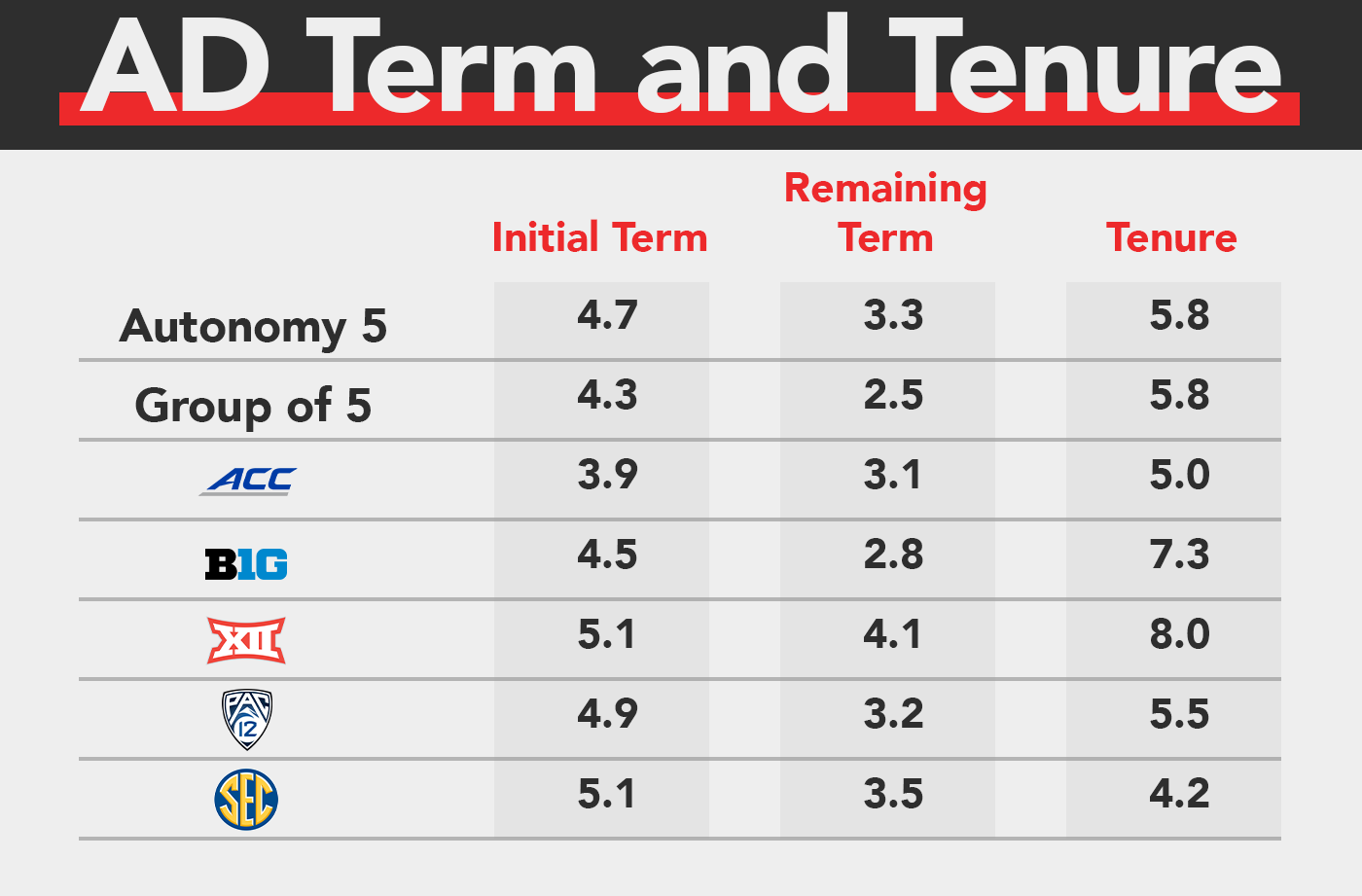


Compensation and Bonuses
Total Compensation and Maximum Bonus Availability (Averages)
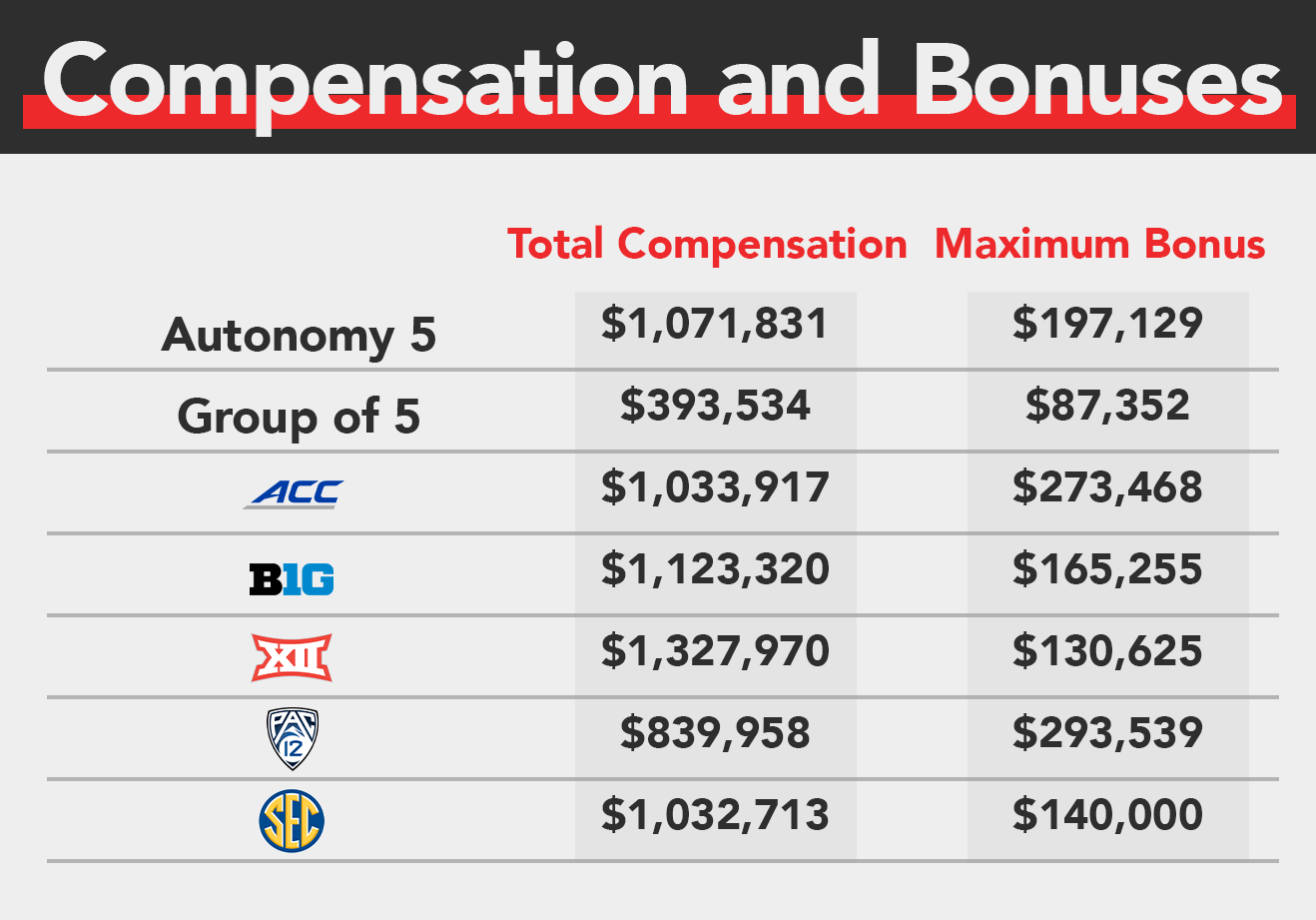
Bonus compensation for athletics directors typically falls into the following three primary categories:
- Athletics. Bonuses based on athletic team performance include rewards for BCS Bowl games, NCAA Tournament Appearances, conference championships and team national championships. Understandably, the optics of providing bonuses for national championships earned by individual student athletes (e.g., wrestlers) are making such bonuses increasingly rare. But bonuses based on overall department competitive performance, as measured by final year-end standings in the Learfield Directors Cup, have become more common.
- Academics. Academic-related bonuses are typically focused on student-athlete GPA (Grade Point Average), APR (Academic Progress rate) and GSR (Graduation Success rate). This year, however, several Group of 5 athletics directors have bonuses based on their employer school receiving the full Academic Unit Revenue Distribution per the NCAA’s new academic based revenue distribution model.2
- Administrative. Administrative bonuses include provisions regarding revenue enhancement (e.g., fund raising, increased ticket sales) and more general performance criteria primarily aimed at department economics and student-athlete citizenship. More frequently, administrative compliance, such as no Level I or Level II violations, represent threshold criteria for earning bonuses based on academic and athletic performance.

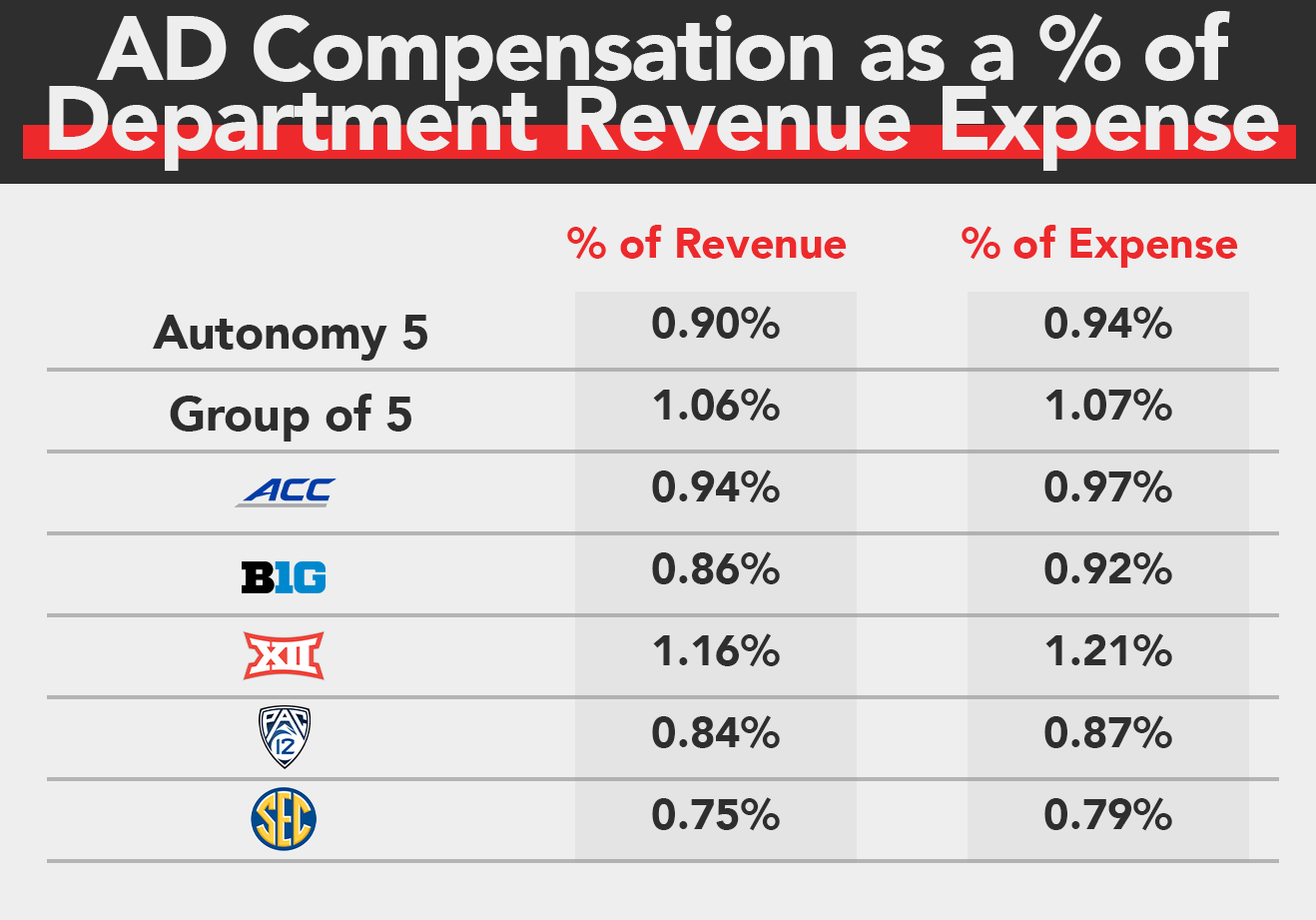
Guaranteed Compensation
Athletics directors enjoy a relatively higher percentage of guaranteed annual compensation compared to football and men’s basketball head coaches. Importantly, however, this statistic is not only a testament to the perceived value of athletics directors and the financial stability of their contracts but also reflects the fact that their head coaches are routinely compensated at exponentially higher levels.
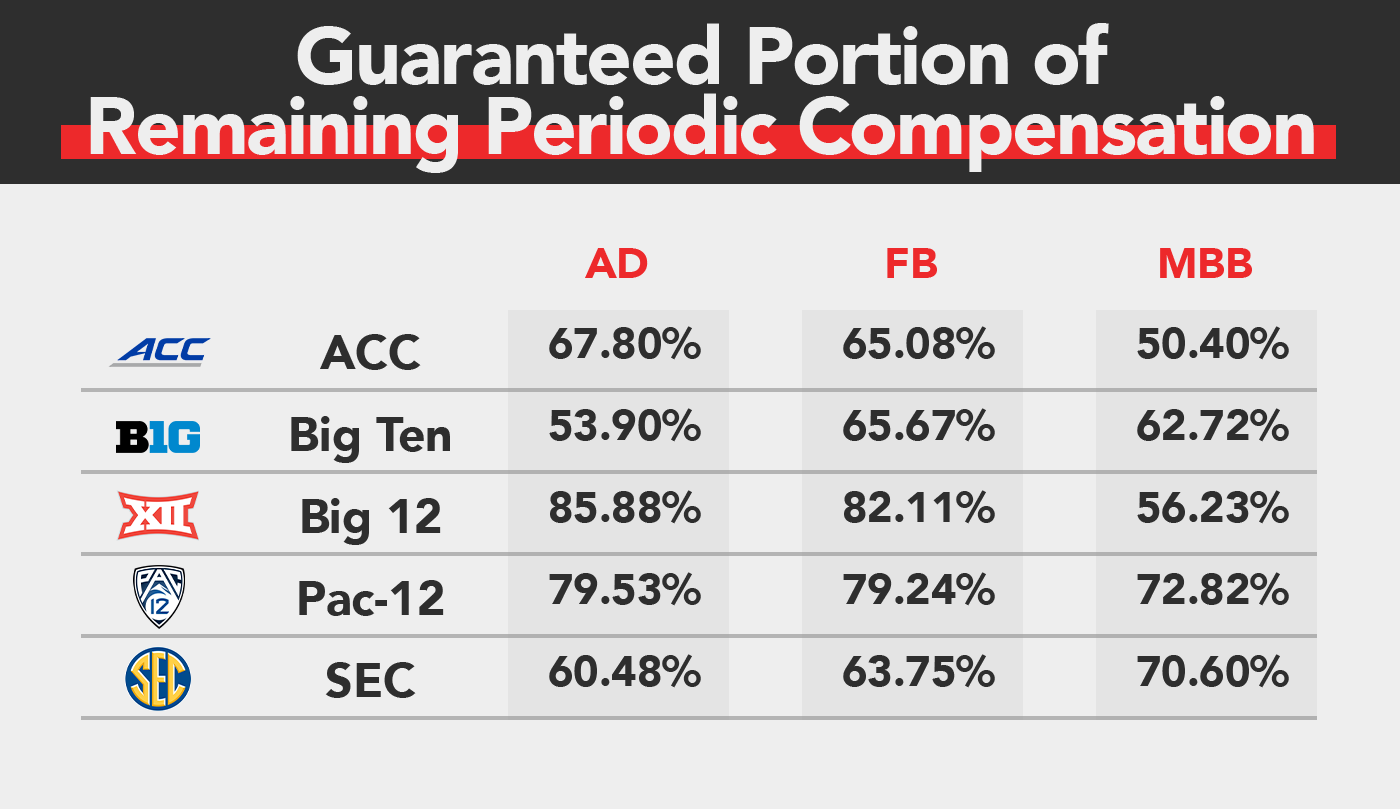
Payouts/Buyouts
Payouts are the sums owed by universities to athletics directors when the universities terminate athletics directors’ employment agreement without cause (as “cause” is defined in the athletics director’s employment agreements). Buyouts are the sums owed by the athletics directors to their universities when the athletics directors terminate their employment agreements without “cause”.
Ratio of Payouts to Buyouts
From our analysis of athletics directors’ contracts we determined that the current average ratio of payouts to buyouts in the entire sample set is slightly greater than 3:1 (exclusive of the potential application and effects of mitigation). This ratio typically decreases as the employment agreements draw closer to their expiration. In some instances, particularly where the payout and buyout are based on different criteria (e.g., a payout calculated on remaining base salary through the end of the Term and a buyout established pursuant to prescribed payment schedule), buyouts can exceed payouts in the latter years of athletics directors’ employment agreements. For successful, veteran athletics directors – read: those with leverage – evaluating extensions to their employment agreements, consideration should be given to substituting a buyout (the “stick” approach”) with a retention bonus or similar longevity incentive (the “carrot” approach).
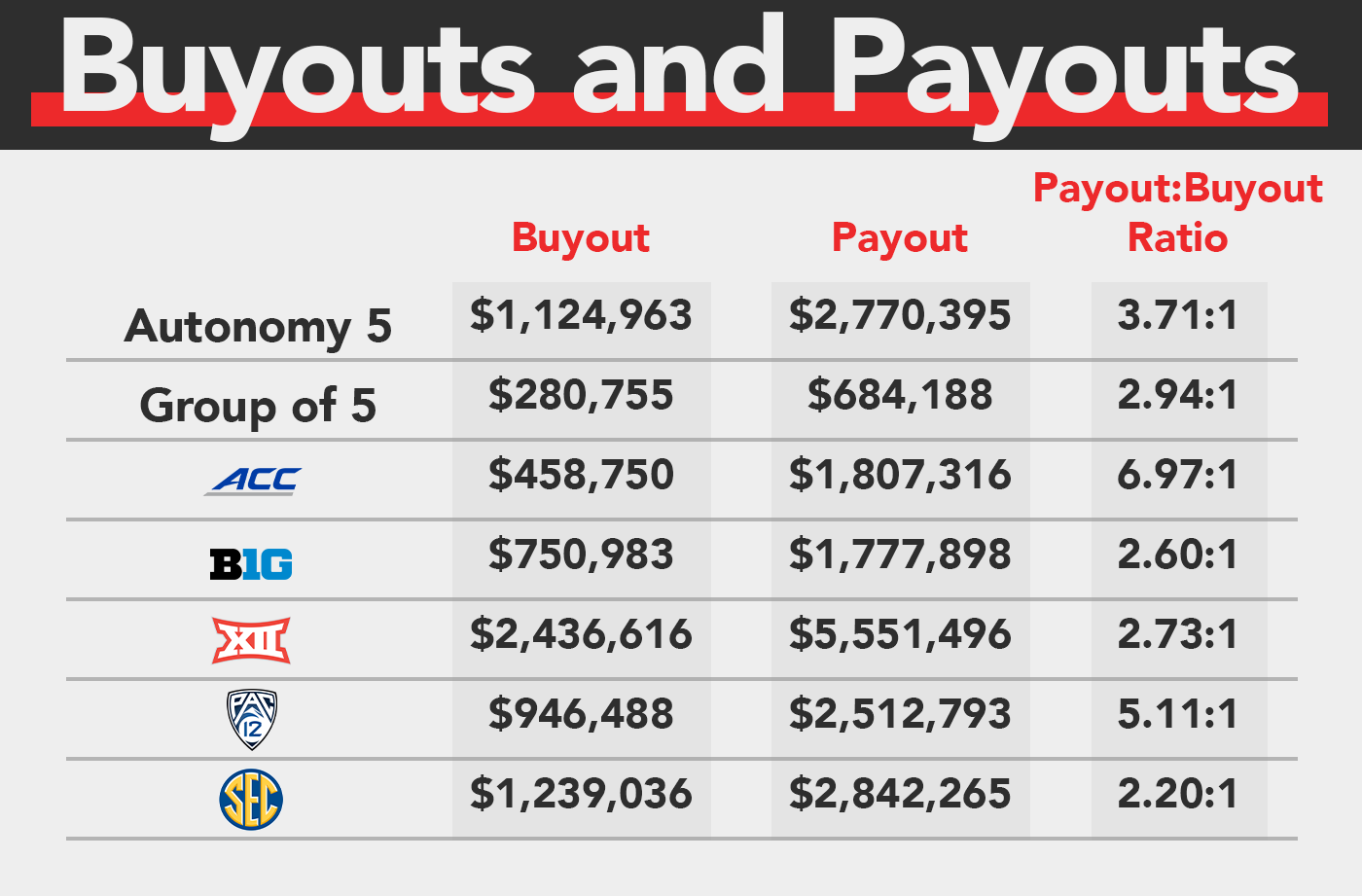
Relevant Financial Considerations.
There are numerous factors that support of a 3:1 payout to buyout ratio. Importantly, unless a third party (e.g., future employer) satisfies the athletics directors’ buyout obligations (and resulting income tax consequences, if any), athletics directors receive payouts and pay buyouts with after-tax money; the worst of both worlds from an income tax perspective. Moreover, in most cases, the athletic directors’ employment agreements afford universities a discount in the form of mitigation obligations that impose a dollar for dollar off-set of the payout from active income earned by the athletics directors during the employment agreements’ remaining terms. Mitigation obligations imposed on the athletics directors has the practical effect of reducing, oftentimes materially, the payout to buyout ratio. And, except in the rarest circumstances, universities’ financial means are exponentially greater than the athletics directors they employ.

Hiring Coaches
Perhaps the most important, and certainly the most publicized, aspect of athletics directors expanding scope of duties is hiring coaches, particularly football and men’s basketball head coaches. Relatively few standing athletics directors have made both of those hires for their current institutions.

*****
1 – Unlike the market for college coaches, there is not a traditional hiring period for college athletics directors. Consequently, the awarding, termination and administration of their employment Contracts, including adjustments to the duration and compensation prescribed by those Contracts, occurs throughout the calendar year. Thus, total compensation for college athletic directors is typically more difficult to normalize at any given time relative to compensation for college coaches. An independent methodology (described in the Database) was consistently applied to the analysis of each Contract in order to normalize the economic data derived therefrom and enhance its comparative utility.
2 – Starting with the 2019-2020 academic year, each school can earn one academic achievement unit per year (estimated at an initial value of approximately $55,000 per unit in the first year of the program) if its student-athletes meet at least one of the following requirements:
- Earn an overall, single-year, all-sport Academic Progress Rate of 985 or higher.
- Earn an overall all-sport Graduation Success Rate of 90 percent or higher.
- Earn a federal graduation rate that is at least 13 percentage points higher than the federal graduation rate of the student body at that school.
Money will be distributed to the conferences with no restriction on how it is spent. See, ncaa.org for more details.

